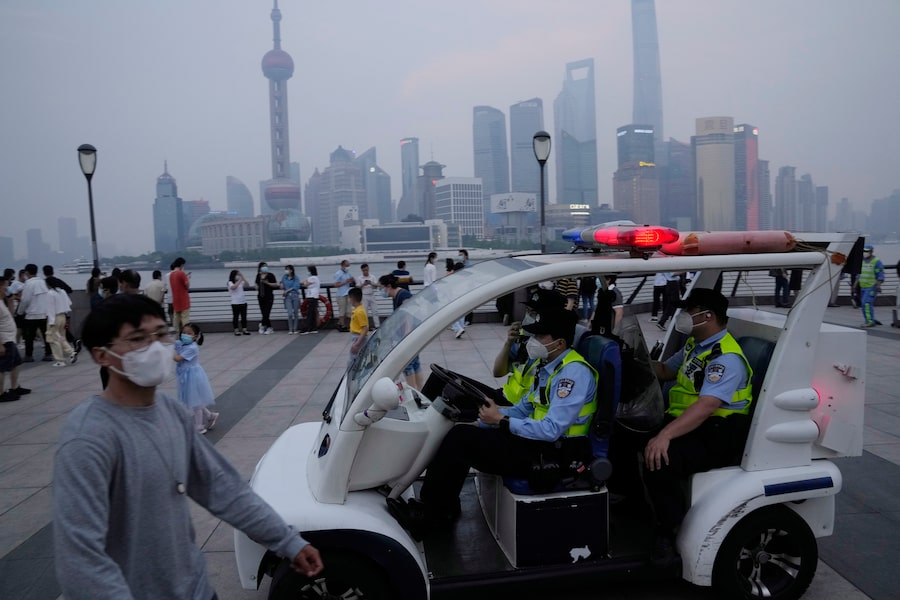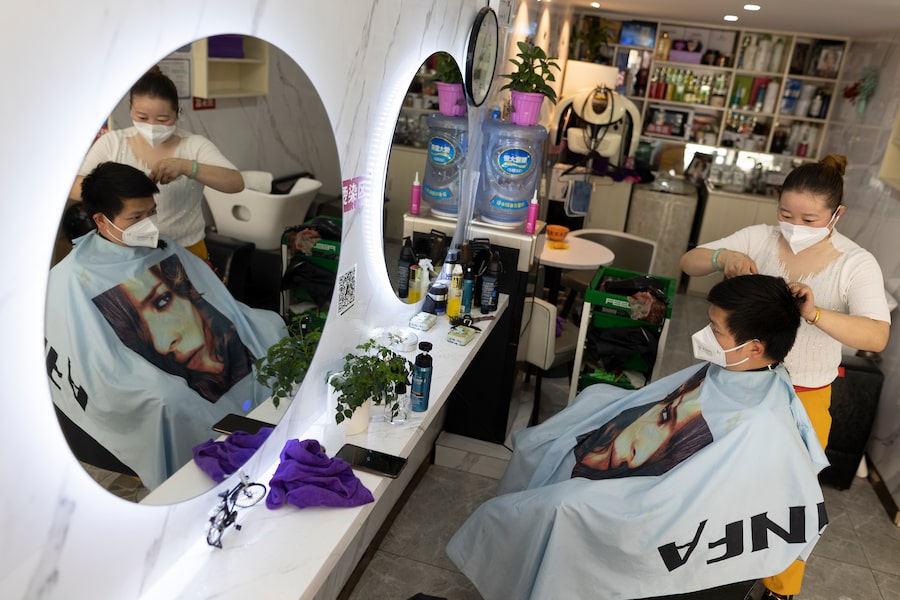You know it’s been a long lockdown when a traffic jam is exciting.
Shanghai residents revelled in relative normality Wednesday as the city finally eased stringent COVID-19 restrictions after two months. In chat groups and on social media, people shared photos of themselves doing mundane activities like buying coffee, riding the subway, or, yes, sitting in traffic.
Some 22 million residents, about 90 per cent of the population, who live in low-risk areas that have been declared infection-free for two weeks were permitted to leave their compounds this week. Moving around the city freely will require showing a negative PCR test taken within the last 72 hours, however, and regular testing will remain in place for the foreseeable future.
Much of Shanghai has been locked down since late March, following a spike in COVID-19 cases driven by the more infectious Omicron variant. While local authorities initially tried to balance containing the virus with keeping one of China’s most important cities and commercial hubs operational, the need to conform to Beijing’s strict “zero-COVID” protocols won out and tough restrictions were enacted citywide.
At times, this left Shanghai residents struggling to find enough food, and over the course of the lockdown there was a surprising degree of resistance for a country that had until this year largely supported the government’s anti-COVID measures. Videos posted online showed people arguing and even fighting with epidemic workers, as well as the often dire conditions in government-run quarantine camps, where anyone who tested positive for the virus, or even was a close contact of a positive case, was forcibly sent.
At a news conference on Tuesday, Zong Ming, vice mayor of Shanghai, said the government “will fully restore the normal order of production and living across the city.” In a statement released as the city reopened, officials promised to “redouble our efforts to give people more reasons to believe in Shanghai … and love Shanghai.” They said the city would “regain its prosperity and vitality, and march toward an even brighter future.”
Bright yellow barriers that had surrounded buildings and city blocks have been removed, and subway lines, shopping malls and convenience stores reopened. This week also saw the closure of the city’s largest temporary hospital, set up to process the huge numbers of people who tested positive for COVID-19 – whether they showed symptoms or not. Housed within a convention centre, the hospital treated more than 174,000 patients over the course of the lockdown, according to state media.
Earlier partial easing of restrictions in some neighbourhoods had seen many rush to leave the city, particularly students and migrant workers, either keen to be home or not willing to trust that the lockdown won’t return.
Others worried about adapting to normality after so long trapped inside. “Thinking that I have to squeeze into the subway during peak hours to go to work sounds so surreal to me,” a Shanghai resident surnamed Shao told local news outlet Sixth Tone. “I have no idea what the outside world is like.”
Terence Gong, a manager at a state-owned insurer in Shanghai, told the South China Morning Post he had “forgotten how to drive and how to work.”
“It will take several days before we can adapt to the ‘new normal’ with constant nucleic tests and social distance rules,” he added.
The months-long lockdown – along with restrictions in Beijing and several other cities, and limits on travel around China – has taken a major toll on the economy. Most analysts agree the country will struggle to hit growth targets this year, and the government has been forced to introduce stimulus measures.
While stocks rallied on the news of the lockdown lifting, and economists predicted a gradual recovery, the risk of renewed restrictions later in the year has many wary, as China shows no sign of shying away from its tough approach, even as the rest of the world opens up.
Indeed, the country appears to be doubling down on “zero COVID,” with mass testing becoming a fact of life in cities across China. Travel around the country remains difficult, dependent on whether a person’s “health code” is green that day, which can change due to close contact with someone who tests positive, or even just a minor spike in cases in their home area.
“Although China’s dynamic clearing policy seems to produce many unwelcome side effects, most of which are caused not by the policy itself but by it being carried out inappropriately, it has proved to be the most efficient policy to protect people’s lives,” the state-run China Daily said in an editorial on Tuesday.
The authorities have appeared at times to be taken off guard by resistance against their measures in recent months, particularly in Shanghai and Beijing. Several universities in Beijing saw protests over COVID-19 restrictions in recent weeks, forcing authorities to back down, fearful of the optics of large student demonstrations near the anniversary of the 1989 Tiananmen Square protests.
Criticism of “zero COVID” measures and complaints about the lockdown in Shanghai have often been subject to strict censorship, however, and a notice leaked to the U.S.-based China Digital Times this week warned media outlets to “keep a firm grip on messaging” as restrictions are eased.
“Emphasize that related measures were temporary, conditional, and limited,” the notice said, adding that reports should avoid phrases like “ending the lockdown” or a “return to normality.”
With a file from Alexandra Li.
Sign up for the Coronavirus Update newsletter to read the day’s essential coronavirus news, features and explainers written by Globe reporters and editors.






 James Griffiths
James Griffiths